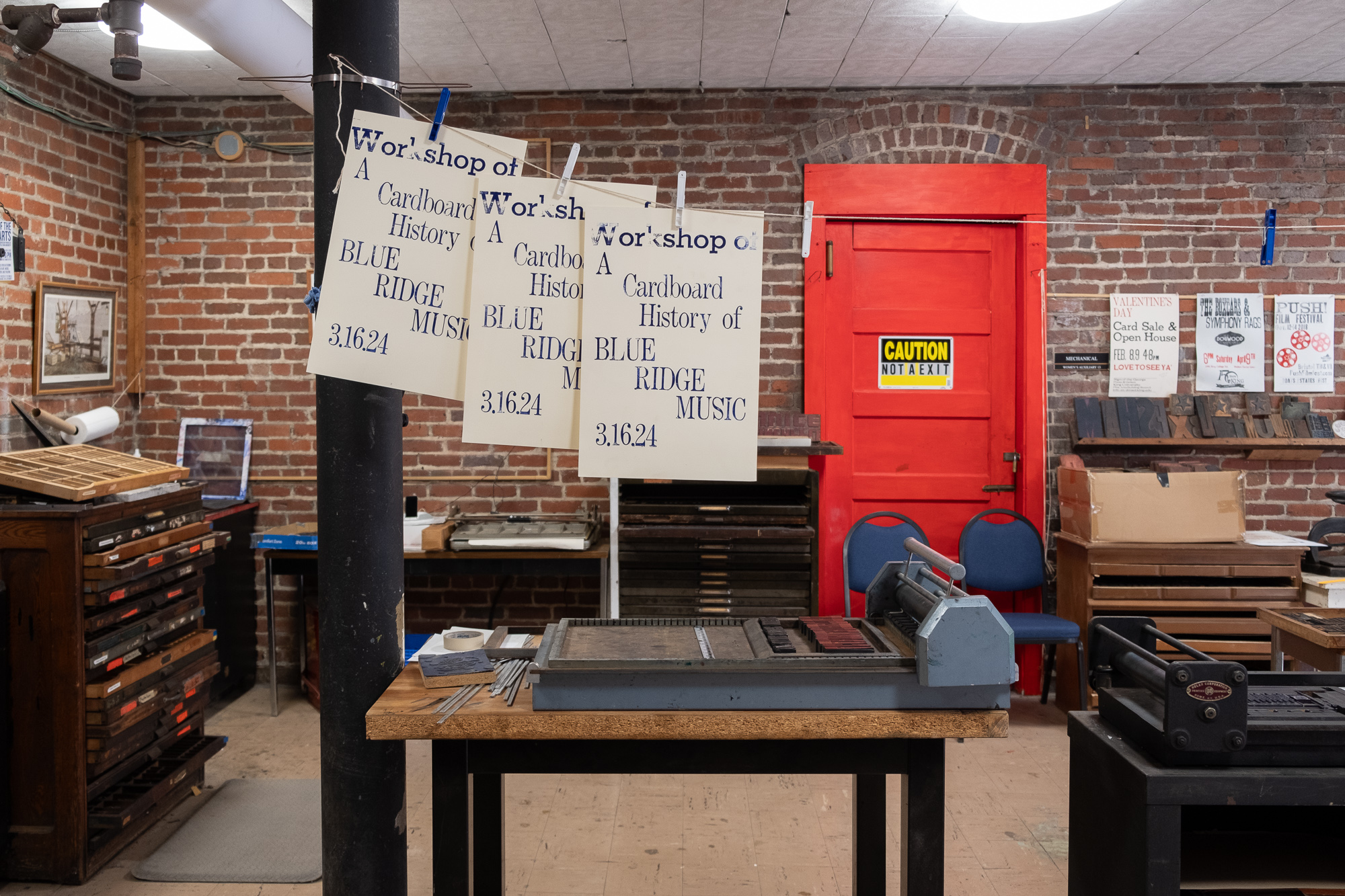by David Winship, Guest Blogger
Getting the word out takes on a special significance when one talks about the method that the visual word is produced. Many have heard of the history of printing, that Gutenberg produced the first movable type in Europe. Some know that over the following five hundred years, printers used a variety of technologies, from monotype to linotype and letterpress to offset printing to our modern digital processes. Yet few recognize the threads that run through the centuries of printing that are reflected in the current exhibit at the Birthplace of Country Music Museum entitled, “A Cardboard History of Blue Ridge Music.”
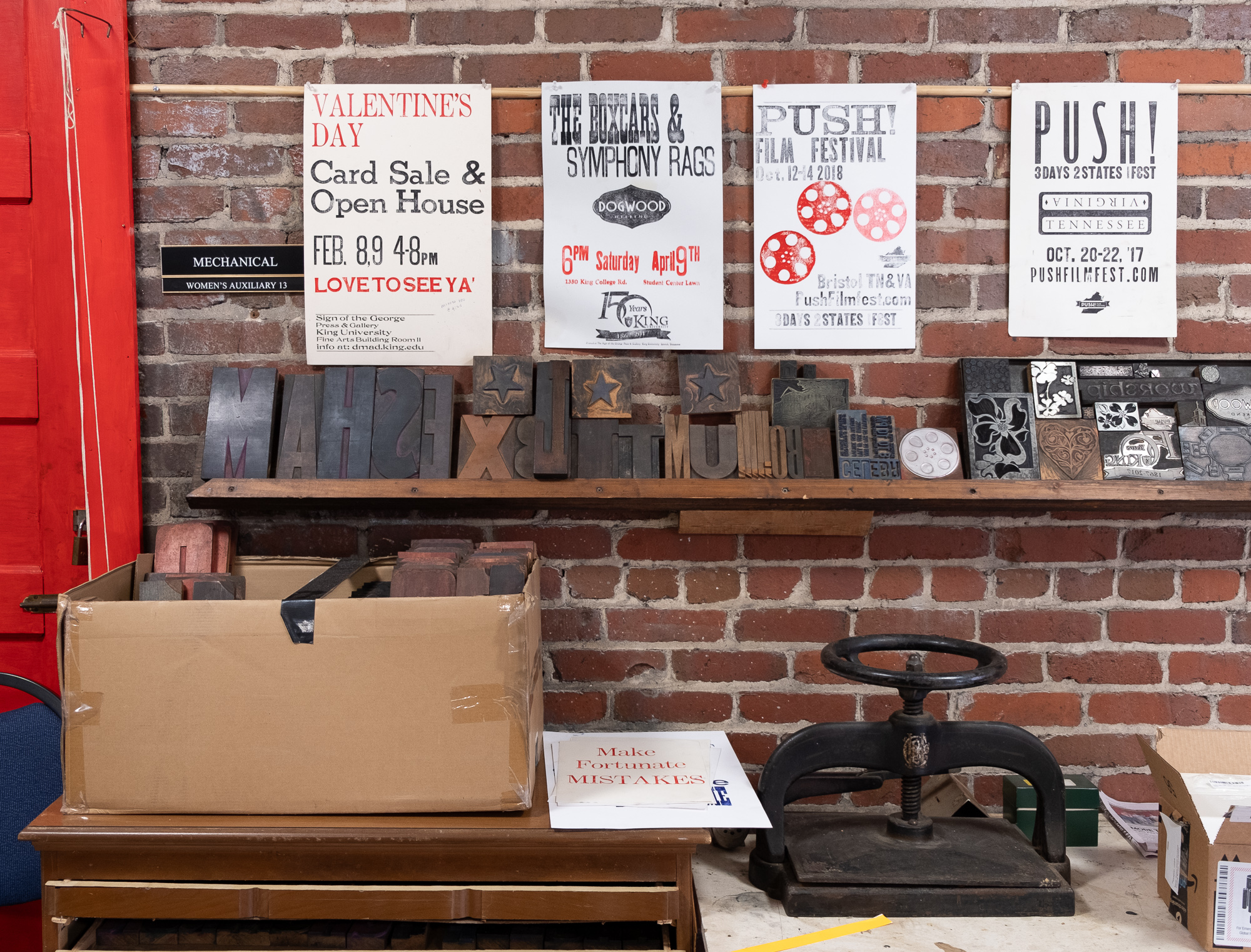
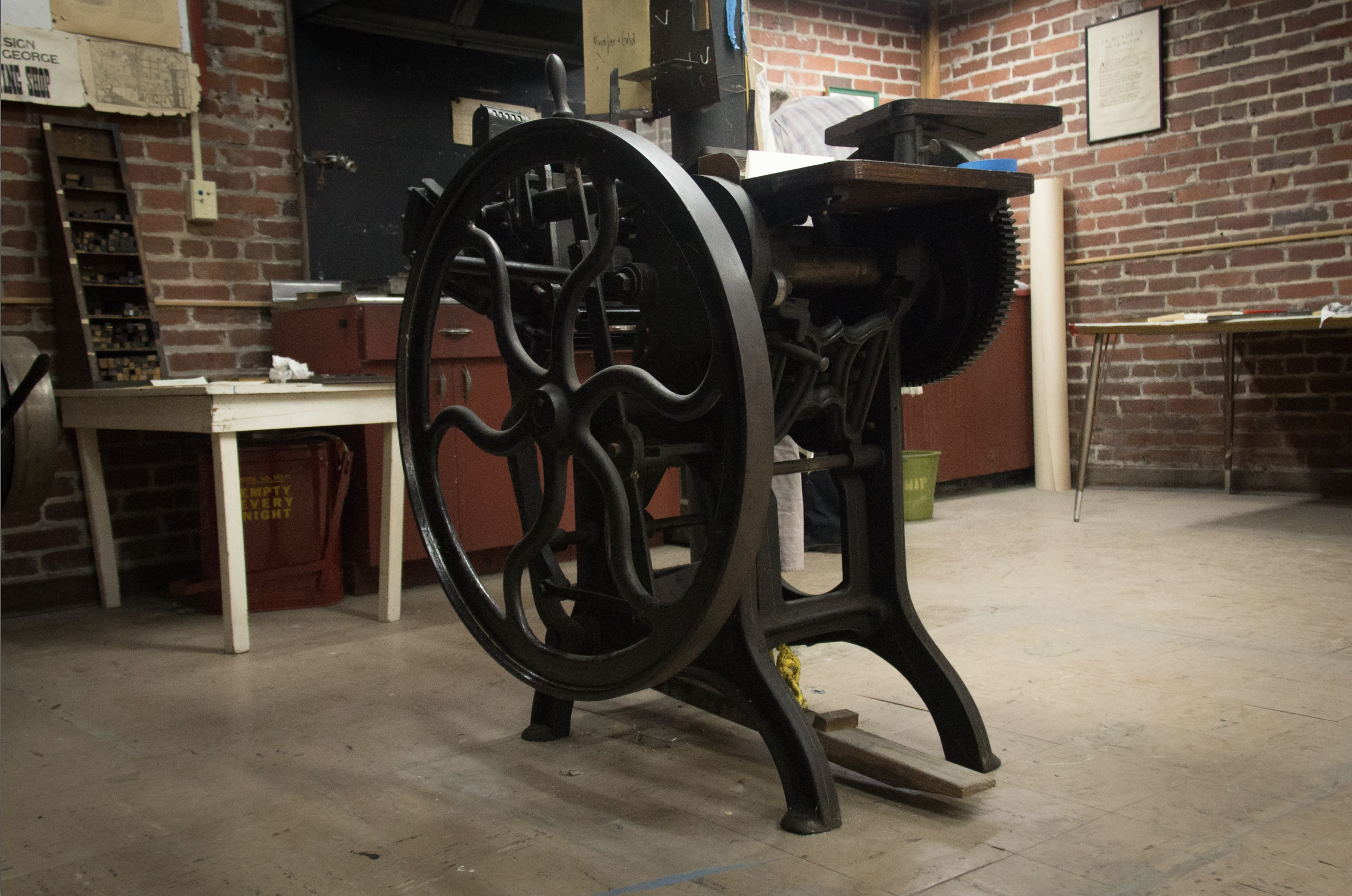
These posters that anchor the exhibit were produced with handset and letterpress printed type, some from small local print shops and some from more established print shops, such as Hatch Show Print in Nashville. The posters used primarily wooden type, which could be up to 5” in height to grab your attention. Some of the smaller type up to 1” were metal. Both types would have been arranged and fastened together to be printed on presses that had their origins in the early days of printing, both presses that were flat bed operated manually and presses that were motorized.
In the early days of country music, hand bills that could be put up in stores and stations advertised the location of music shows. The posters of this collection are primarily from the 40s through the 70s and advertised concerts and small festivals. They were printed on thick cardboard, were cheap and easy to produce, and were expected only to last from the time of posting to the time of the show and then thrown away. The fact that many have survived is a tribute to both the stability of the printed form and the diligence of those who recognized their historical importance.
Letterpress printing is a trade that has gone out of favor with the coming of more modern techniques, but has reemerged as a craft in the art field. When many of the old shops closed or were converted, often the type was scrapped, the presses were sold for their weight in cast iron, and the typecases ended up as showcases for knick-knacks. For those materials and equipment that survived, the current recognition of hand-crafted art will prolong the legacy of the printing trade.
Letterpress refers to both the type of medium which is being printed, as well as the technique and presses which are used for printing. In this context, the letters are individual or monotype. This means that each letter has to be uniquely selected and arranged to form the words. These lines of type are then firmly locked into a frame, which is then printed on a press.
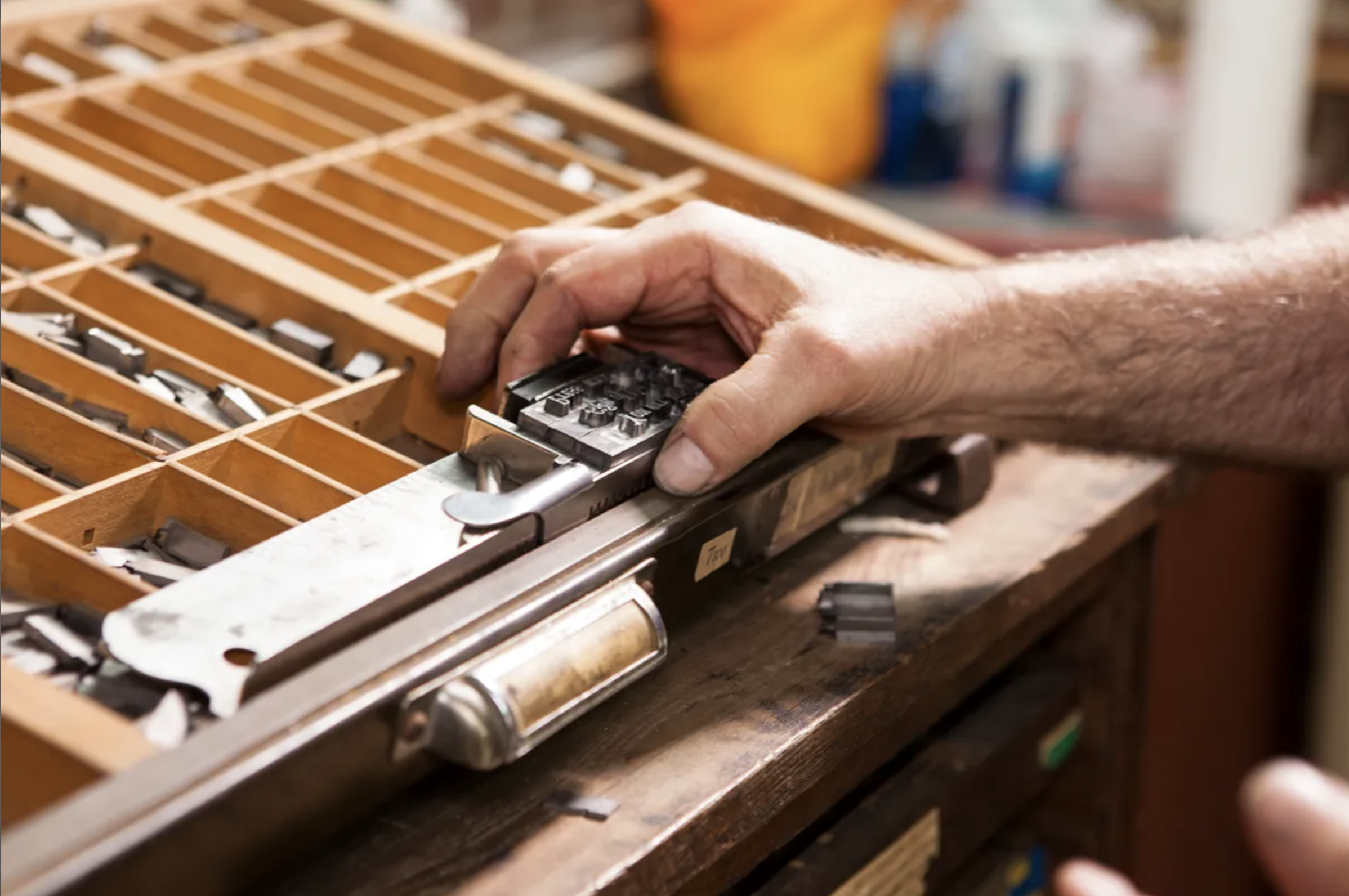
Pictures that accompany the text can be made mechanically or by hand, cut from wood, linoleum or engraved. When the copy is set and prepared, ink is applied by rollers, either by hand or mechanically on the larger presses. Unique to this process is that the letters are created and set in reverse, essentially backward, so that when the impression is made it comes out right side up and readable.
Locally in Bristol at King University, the Sign of the George Press has had a resurgence with the support of the Digital Media Art and Design Department. The Press was started by Dr. George P. “Pat” Winship in the late 60s as a way to show his English students the methods that authors like William Shakespeare had to manage to get their literary works into print. Dr. Winship had a small press when he was growing up as the son of a rare books librarian and he continued the press by accumulating type and presses from the printshops that were going out of or away from the letterpress business as they modernized. The press at King is operated by Winship’s son David, a retired public-school educator who grew up with the press.
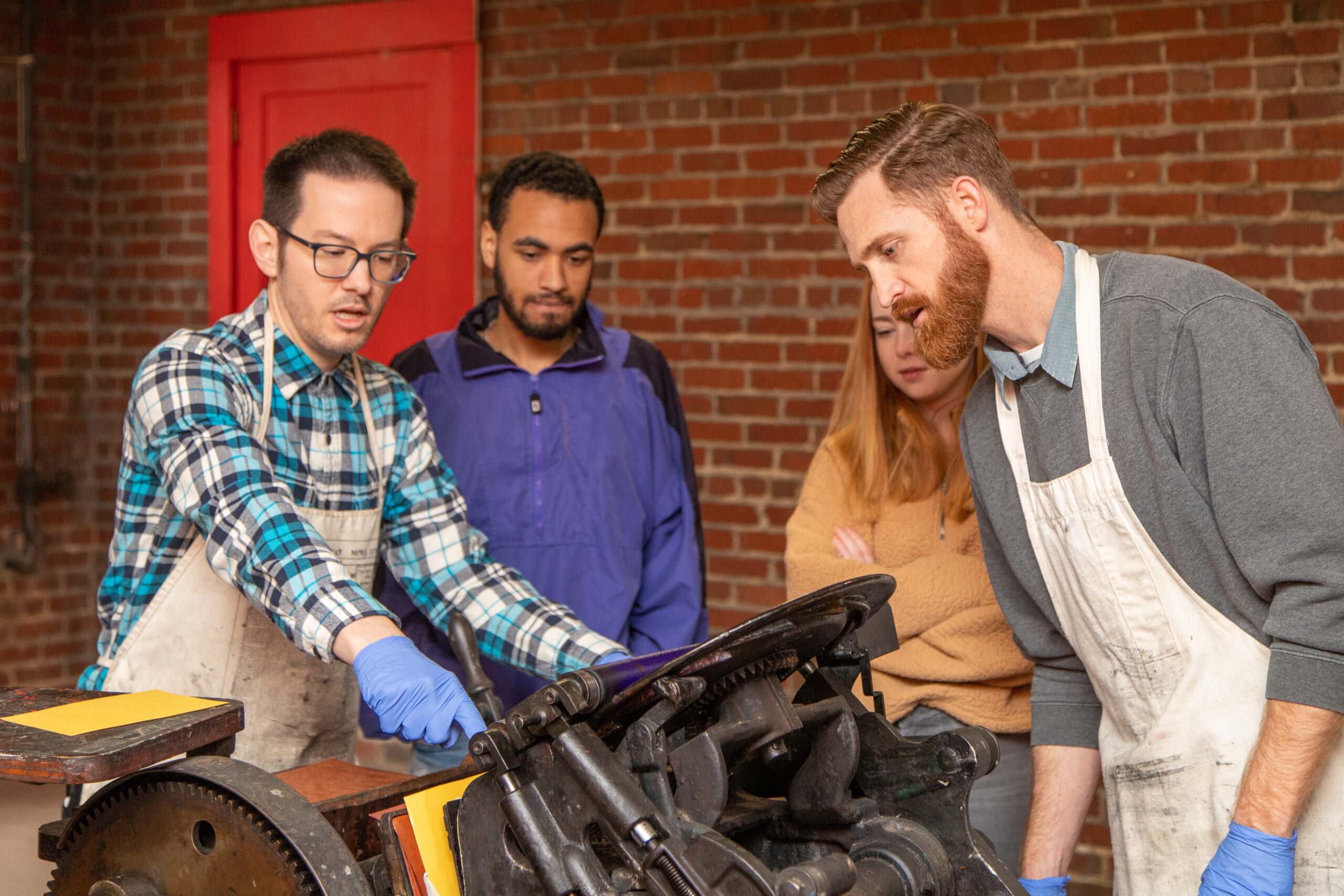
The Birthplace of Country Music Museum will offer a hands-on workshop at the Museum on March 16, which will allow participants the opportunity to learn about letterpress printing, produce a poster of their own, and to tour the exhibit. Participants will also have the opportunity to tour the Sign of the George Press on King University campus to get a close up look at the printing process.


